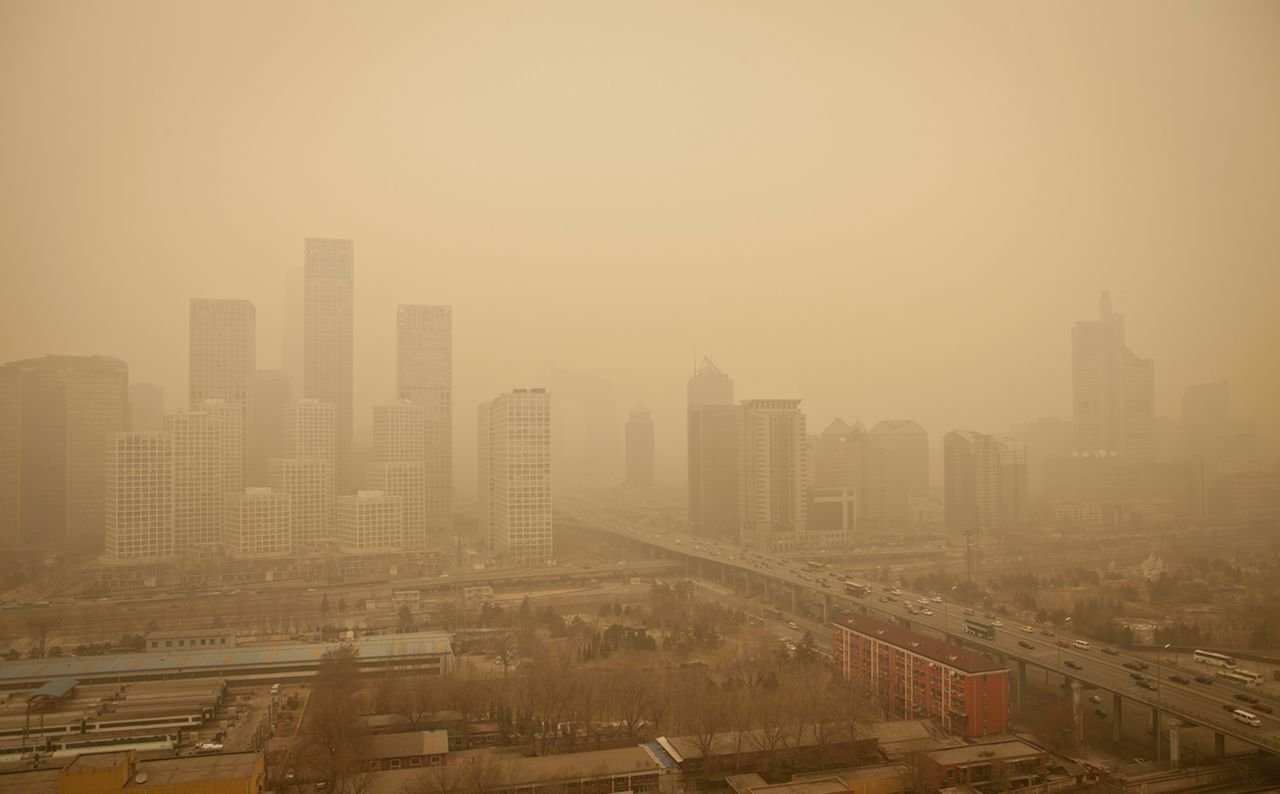In a recent report by IQAir, it has been disclosed that a staggering majority of the world’s most polluted cities, amounting to 83 out of 100, were nestled in Asia.
In a recent report by IQAir, it has been disclosed that a staggering majority of the world’s most polluted cities, amounting to 83 out of 100, were nestled in Asia. The study underscores the critical role of the climate crisis in exacerbating air pollution levels, posing severe health risks to billions worldwide.
The report, which meticulously tracks air quality globally, focused on fine particulate matter known as PM2.5, renowned for its minuscule yet perilous nature. Shockingly, only a mere 9% of over 7,800 cities scrutinized worldwide managed to meet the air quality standards set forth by the World Health Organization (WHO), stipulating that average annual PM2.5 levels should not surpass 5 micrograms per cubic meter.
Frank Hammes, the CEO of IQAir Global, emphasized the pervasive impact of air pollution on every facet of life, estimating that in some of the most afflicted regions, individuals could be losing three to six years of their lifespan due to poor air quality.
PM2.5, upon inhalation, infiltrates deep into lung tissue and can permeate into the bloodstream. Its sources range from the combustion of fossil fuels to dust storms and wildfires, unleashing a host of respiratory ailments including asthma, heart diseases, and even cognitive impairment in children.
Topping the list of the most polluted cities was Begusarai, a metropolis in India’s Bihar state, boasting an alarming PM2.5 concentration of 118.9, surpassing WHO guidelines by a staggering 23 times. India dominated the rankings with cities like Guwahati, Delhi, and Mullanpur trailing closely behind.
The dire situation in India extends across the nation, with a staggering 96% of the populace enduring air quality levels seven times higher than WHO recommendations.
Central and South Asia emerged as the global epicenters of air pollution, with Bangladesh, Pakistan, India, and Tajikistan securing the top four spots for the most polluted countries. South Asia, in particular, harbors 29 out of the 30 most polluted cities, with Lahore, New Delhi, and Dhaka featuring prominently in the rankings.
Hammes stressed the imperative for sweeping changes in energy infrastructure and agricultural practices to effect substantial improvements in pollution levels across the region.
Moreover, the report shed light on the global ramifications of air pollution, with a staggering 92.5% of the locations analyzed surpassing WHO’s PM2.5 guidelines. Only a handful of countries, including Finland, Estonia, and Australia, managed to maintain “healthy” air quality standards.
The lethal toll of air pollution is staggering, claiming millions of lives annually. Fossil fuel-related air pollution alone accounts for 5.1 million deaths yearly, according to a study published in the BMJ. The WHO further estimates that 6.7 million deaths annually stem from the combined effects of ambient and household air pollution.
The symbiotic relationship between the climate crisis and air pollution exacerbates the perilous situation. Alterations in weather patterns induced by climate change disrupt the dispersion of pollutants, exacerbating pollution levels. Additionally, the intensification of wildfires and prolonged pollen seasons further compounds health risks associated with air pollution.
While North America grappled with rampant wildfires, Asia witnessed a resurgence in pollution levels. China, once a flag bearer of pollution mitigation efforts, experienced a reversal in the downward trajectory of pollution levels. Beijing, in particular, witnessed a 14% surge in annual average PM2.5 concentration, marking a stark departure from previous trends.
Southeast Asia mirrored this trend, with Indonesia witnessing a 20% surge in pollution levels compared to the previous year. Thailand, grappling with hazardous pollution levels, resorted to measures such as ordering government employees to work from home to mitigate the crisis.
The report underscored a glaring disparity in air quality monitoring, particularly in regions like Africa, South America, and the Middle East. While Africa saw marginal improvements in data availability, the continent remains grossly underrepresented in air quality assessments.
Despite the grim prognosis, there is a glimmer of hope in burgeoning civic engagement and advocacy for air quality monitoring. Such endeavors underscore the pressing need for concerted action from governments and stakeholders to combat the scourge of air pollution, ensuring a healthier and sustainable future for generations to come.
